Richard Brookhiser set out to write a book about the history of liberty in America. In the introduction he says, “This is not a book about almost liberty elsewhere; it is a book about the real thing, here in America.” He adds that, “the unique feature of America’s nationalism is its concern for liberty.” He could have taken on this challenge in so many ways, but he decided to focus on thirteen documents, from 1619 to 1987 – that is from the “Minutes of the Jamestown General Assembly” to Ronald Reagan’s “Tear Down This Wall” speech.
If you think this is a conservative version of America’s history of liberty, you’d be misguided. He includes everything from the New York Manumission Society to the Seneca Falls Declaration for women’s rights to William Jennings Bryan’s “Cross of Gold Speech” to Franklin Delano Roosevelt’s “Arsenal of Democracy” fireside chat. What unites Americans across the political spectrum is a concern for liberty. As Brookhiser says in the intro to his podcast series on the book, “Before we were even a country, Americans were thinking about liberty, working for it, fighting for it. We’ve been doing it for four hundred years.” Sometimes we even fight each other over it, as is noted in his chapter on Lincoln’s “Gettysburg Address,” which sought to bring the Union back together on hallowed ground.
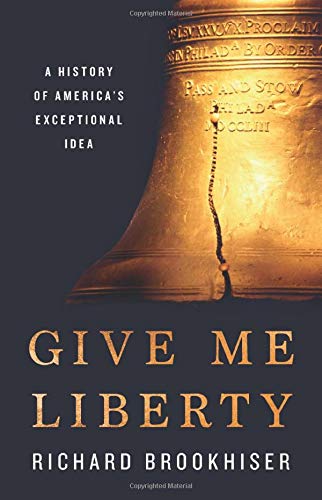
With that being said, today many Americans are misguided about liberty; or simply pay no attention to this tradition. Last year, The New York Times even started the 1619 Project, which is a seriously bad revisionist history of America’s early settlers. While no one should discount the enslavement of peoples (in this case, black peoples from Africa, and their descendants in America), the history of America is not one of slavery or racism; it is one of overcoming all of those hundreds and thousands of years of human history before we were a country, to proclaim that all men are created equal and are endowed with inalienable rights.
It may have taken us a while to fully live up to that ideal, but our history is one that should be celebrated, not vilified. Reading through Richard Brookhiser’s book about the history of America’s exceptional idea, helps us understand how America’s tradition of striving for liberty for all is one that should be truly admired and not taken for granted. There is nothing better than reading primary source documents – and throughout his book, Give Me Liberty, we get the added benefit of a great historian like Richard Brookhiser to guide us along the way, through four hundred years of the American experience. Below, I give a brief synopsis of some of the major things I took away from each of the thirteen chapters, each focused on a specific document, speech, or poem over these four hundred years.
In Chapter 1, Brookhiser discusses the way self-governance is established in the American colonies. It begins very early on in the colony of Jamestown, founded in 1607. The first decade was particularly hard for the settlers here; difficult winters, bad seasons of agriculture, and even some skirmishes with the natives. “What the colony most needed, though, was stable government,” said Brookhiser. They created a general assembly, which debated how they would govern and what they would govern and how they would be represented. “Representation is a means by which rulers engineer the consensus of the ruled,” said Brookhiser. And he adds that “self-rule began, however haltingly, at Jamestown. So did equality.”
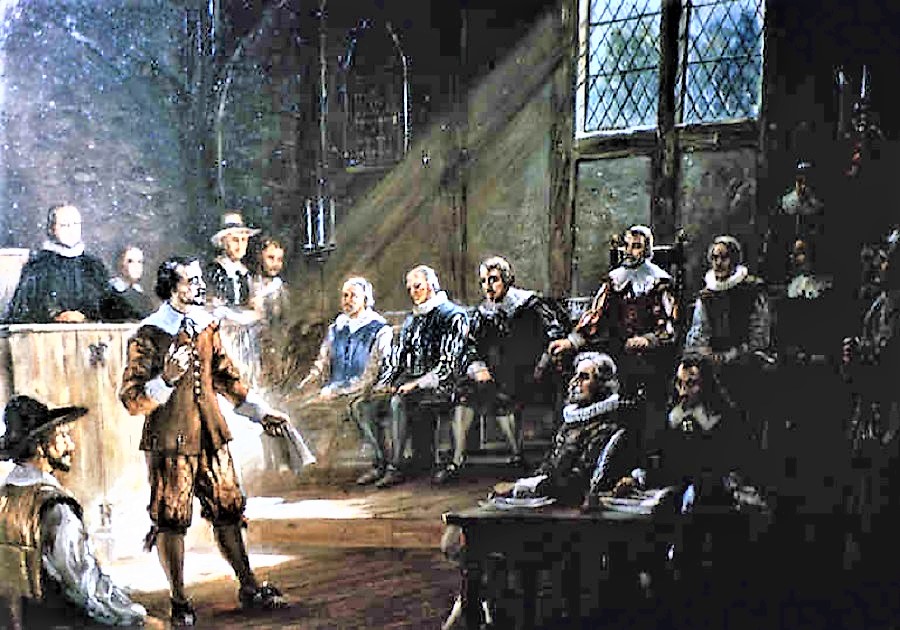
In Chapter 2, we visit the idea of religious liberty, with an account that takes place in what is now Queens, New York. There were many laws taking place that discriminated against various religious sects under the governance of Peter Stuyvesant, who set up a policy to keep Quakers out of the Dutch colony of New Amsterdam (New York). “Rebuke came at the end of the year from his own people,” says Brookhiser. On December 27, 1657, thirty inhabitants of Vlissingen/Flushing signed a remonstrance deploring his new orders.” A remonstrance is a statement of grievance. “Although they are not laws or even proposed laws, they are formal protests or petitions for redress.”
What is perhaps most interesting is that these members of the community stood up for the religious liberty of others because “God told them to do it, and they obeyed – and feared – the Almighty more than their director-general.” Brookhiser tells us that accounts of religious liberty in America “typically ascribe it to enlightenment rationalism: to John Locke,” but he says that “philosophy did not make the men of Flushing take action. Neither did practical sociology. It took God to do that.” What is important from the Flushing Remonstrance, says Brookhiser, “is the effect that its principles had on New York and that New York would have on the country.”
In Chapter 3, Brookhiser takes on the idea of liberty of expression through the trial of John Peter Zenger. In this chapter he also focuses on the fact that, in the colonies, newspapers were prevalent and they “maintained the formula of local news, often uncertain, and foreign news, always old. Sometimes they deliberately stirred up controversy.” 1n 1735, John Peter Zenger had a newspaper and was accused of libel for merely questioning some local laws in New York, but he found lawyers from Philadelphia to represent him, including Andrew Hamilton (no relation to Alexander Hamilton).
In his remarks, Hamilton “was sounding the first note of an argument that the law of libel, as it was then understood, was too broad; government could, and should, be criticized if what its critics said of it were true.” In the courtroom, Brookhiser tells us “what Hamilton wanted the jurors in Chief Justice DeLancey’s courtroom to see and hear was a political truth: that a free press was a necessary defense of freedom.” The jury agreed that Zenger was not guilty and Brookhiser says “these ordinary people had done an extraordinary thing,” and “as a result the press in colonial America flourished” and “the light hand of law made America’s colonial press the freest in the world. Its liberty nourished more than political liberty.”
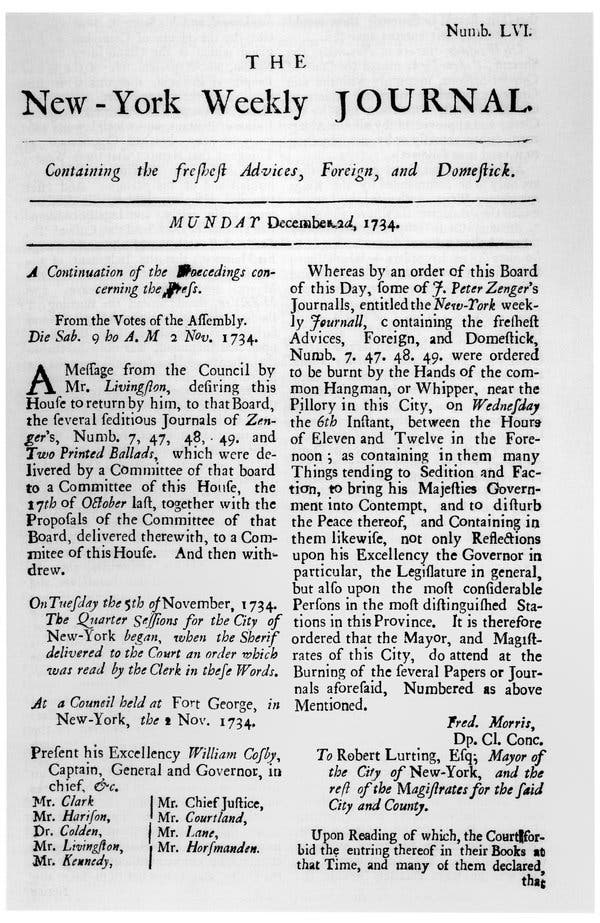
Chapter 4 covers perhaps the most important document in American history, the Declaration of Independence, which Brookhiser says “starts with an essay on liberty – why we are entitled to it, what it is, and its relevance to the matter at hand. Liberty is America’s reason for being.” While he guides us through the many aspects of the Declaration, he says that “maybe the most expansive word in the declaration’s list of rights is among. Life, liberty, and the pursuit of happiness do not exhaust the list. They are only the three rights Jefferson chose to specify, among uncounted, unnamed others.”
Rights “are bolted to us; they are part of us; they are aspects of our nature. They have that character because the Creator made us that way,” says Brookhiser. “The declaration made one more point about men. All of them ‘are created equal.’”
Chapter 5 guides us not yet to the U.S. Constitution, but rather to the Constitution of the New York Manumission Society, a group of abolitionist activists along with those who were men in prime positions of political and economic power in New York. While slavery was not outlawed until after the Civil War in 1865, “antislavery sentiment began to stir after the institution was well rooted,” said Brookhiser. “The first attack on slavery published in America was a petition to a February 1688 meeting of Quakers in Germantown, Pennsylvania. The founders also debate the role of slavery in the U.S. Constitution and even quibbled about it during the drafting of the Declaration of Independence. Some of the men who signed those documents owned slaves, some did not, and still others freed their slaves in their lifetime or in their wills.
After the country’s independence was won “more slaves lived in New York City than in any other American city except Charleston.” So, on January 25, 1785, nineteen New Yorkers met in the house of John Simmons. Most were Quakers. Like Jefferson had done in the Declaration, the Society invoked the Creator, and put an emphasis on consent of the governed (and the enslaved).
By the end of the year, after much debate about how to end slavery, “the manumission of the Manumission Society’s slaves would be left, at least in the short run, to the initiative of members” and “the society successfully petitioned the state legislature to achieve small but crucial reforms.” In 1799, Governor John Jay, signed an act for the gradual abolition of slavery. 18 years later, a new law mandated that all slavery in the state would end by July 4, 1827. While some historians might look on New York as too slow to abolish slavery (especially for a northern state), Brookhiser says that the Manumission Society was “moved by an all-American idea: that slavery deprived “our brethren” of liberty.” And later freed slaves would credit the Manumission Society as having taken important steps to end the institution in New York and in America.
Chapter 6 focuses on the document that set up the government of which we live under since its time, the U.S. Constitution. In that document, “The preamble was a contract and a will, and liberty was the most important item concerned,” said Brookhiser. The delegates “wanted it for themselves and meant to pass it on.” The other important thing for us to remember is that this document was not enacted by Congress or ratified by state legislatures. Rather, in each state, there were conventions set up “of the people” to discuss and debate ratification “by the people” in their state. “America had gone outside its existing structures to write the Constitution; it would go outside them once more to make it real,” says Brookhiser.
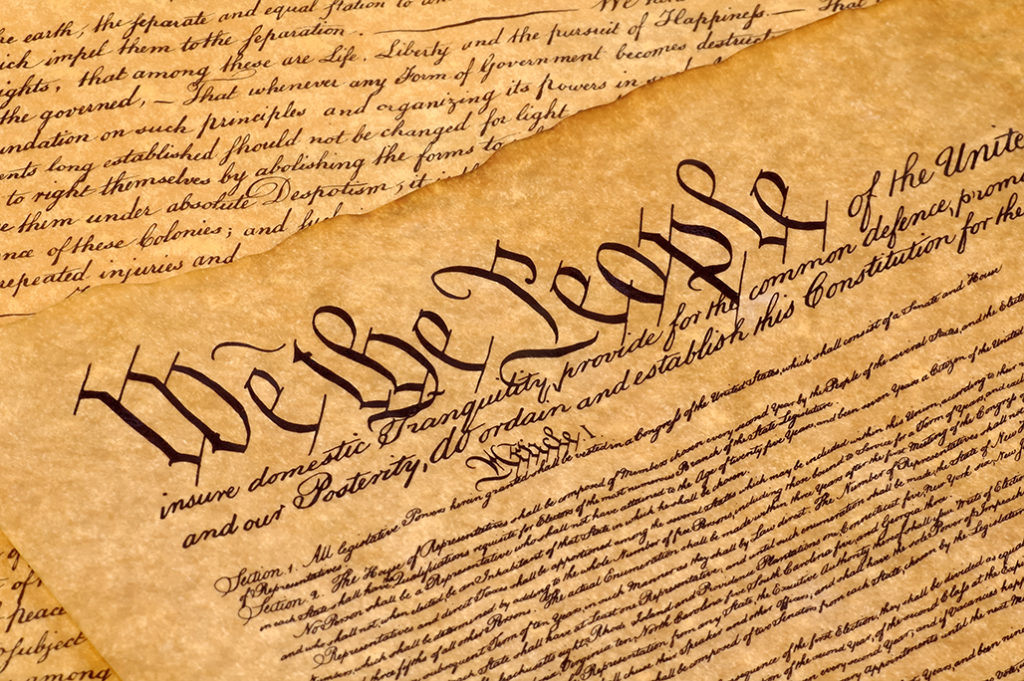
“The constitution is a web of interlocking parts. James Madison argued that its very complexity guaranteed liberty, since officeholders in every branch of government – executive, legislative, or judicial; federal or state – would resist the power grabs of rivals in the interest of defending their own turf.” Because many states already had a Bill of Rights in their own state constitutions, it “made the lack of one in the Constitution glaring,” says Brookhiser. Therefore, “the new Congress, which met in the spring of 1789, accordingly sent what are now the first ten amendments to the states that summer; they were ratified by December 1791.”
Slaves are discussed several times in the Constitution, but nowhere are the words “slave” or “slaves” used, instead they are called “other Persons” or “such Persons.” Brookhiser says that “Slavery, to Madison and to most of his colleagues in Philadelphia, was an embarrassment. Perhaps one day it would wither away.”
“Taken together, these three provisions – no king, no nobility, no mention of slaves – established in fundamental law one of the principles of the declaration: there were no orders of mankind; all men are created equal.”
Chapter 7 reviews the Monroe Doctrine and the important precedent it established for U.S. foreign policy. In this chapter we learn how Monroe formulated this pronouncement (in the form a written “State of the Union” submitted to Congress), who he consulted, in a context of time that the European powers (mostly monarchs) were at war with one another globally. Ultimately, Monroe struck a proper balance between all the sources he was listening to.
Great Britain had actually first approached the U.S. government, through its ambassadors, requesting to make a joint statement that France and Spain should stay out of the Western hemisphere. Monroe pondered whether we should entangle ourselves in European politics. He decided against the joint statement.
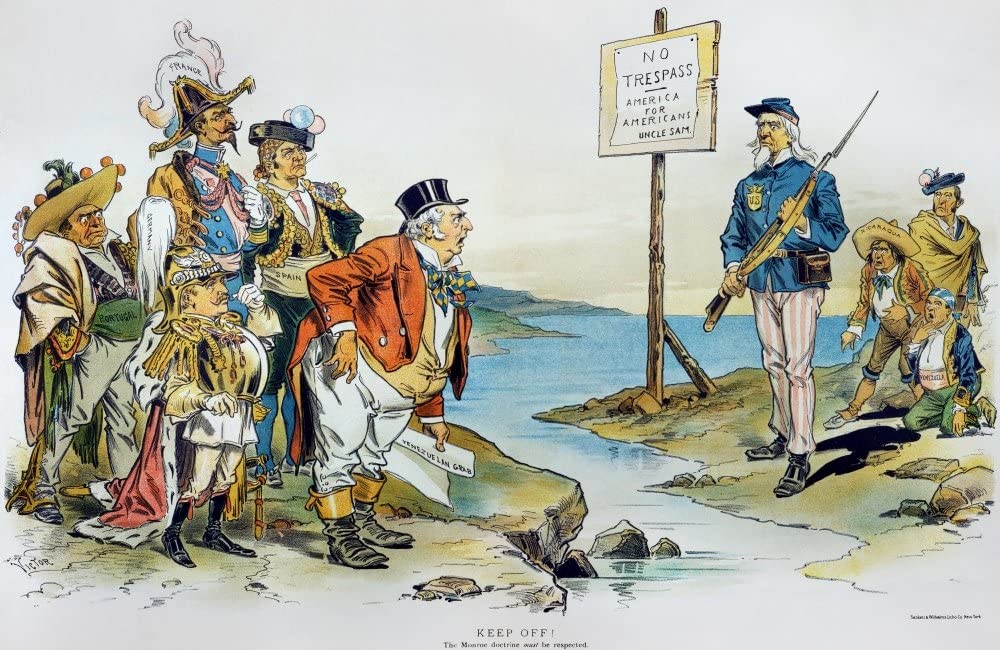
In his own statement, Monroe ultimately asserted that from the vantage point of the United States, “as a principle in which [its] rights and interests [were] involved, the American continents … are henceforth not to be considered as subjects for future colonization by any European powers.” Concerning the wars in Europe, revolutionaries could expect our sympathies, not our help. But American revolutionaries could expect something more. “It is impossible that the allied powers should extend their political system to any portion of [North or South America] without endangering our peace and happiness.”
Brookhiser says that “this was a declaration of geopolitical division” and “equally important, it was also a declaration of philosophical separation … Monroe had said: no more kings.” Brookhiser says that through this foreign policy doctrine, “President Monroe made America, as far as we were able, the advocate of liberty in the world.”
Chapter 8 explores the Seneca Falls Declaration which brought together women to discuss the demands they should be making for their liberty, only realized much later in American history. But the principles were put in place in 1848. One thing I thought was interesting is when Richard Hunt was listening to Elizabeth Cady Stanton and other women (including his wife Jane) discuss their rights, he said: “Why don’t you do something about it?” We can all strive to answer that question on any number of things in front of us. And those women did. Just 10 days later, they held a convention “to discuss the social, civil, and religious conditions and rights of women.”
During this convention in Seneca Falls, New York, they drafted a Declaration of Sentiments that adopted the model of the Declaration of Independence, the preamble of which tracked that of the Declaration of Independence almost word for word. The most controversial topic at the Seneca Falls convention was whether the right to vote should be extended to women. Only two speeches were made in favor – that by Elizabeth Cady Stanton, who “rejected the notion of virtual representation” and that by Frederick Douglass, the only black person known to be at the convention, who added: “if that government is only just which governs by the free consent of the governed, there can be no reason in the world for denying to women the exercise of the elective franchise.”
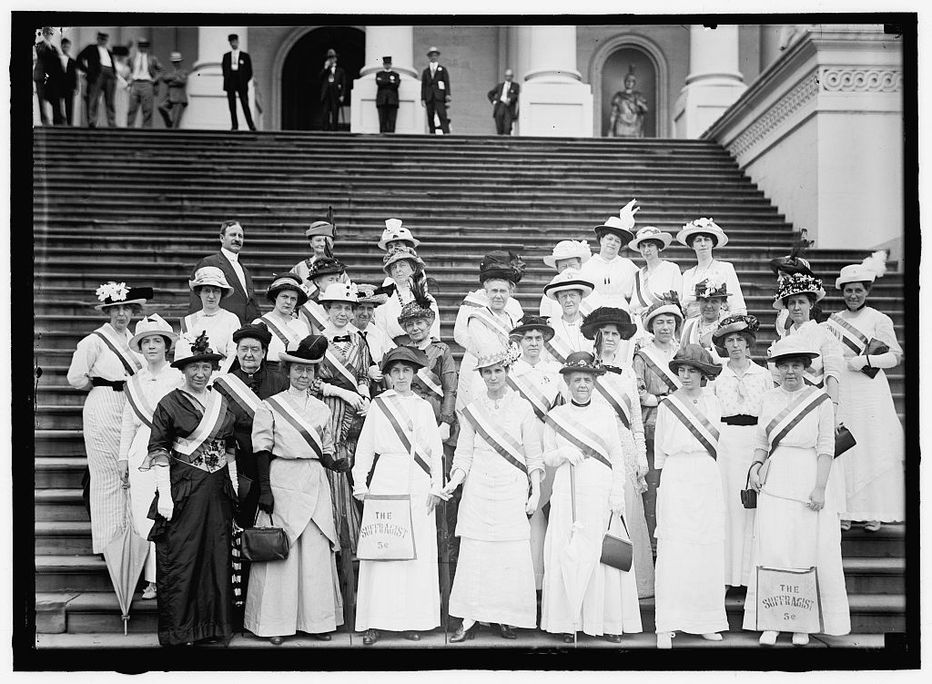
The call to allow women to vote was submitted to a vote and passed. One hundred persons signed the Declaration of Sentiments in Seneca Falls in 1848 (both women and men). Not soon after, the country erupted into larger debates concerning slavery and ultimately into Civil War. Stanton and other advocates for advancing women’s liberty grew impatient but had to wait on the country’s other priorities.
“But the west was poised to go the other way,” says Brookhiser. Wyoming (1869), Utah (1870), and Washington (1883) approved women’s suffrage in the territories, followed by Colorado (1893) and Idaho (1896). In 1917, New York joined. While Stanton and many of the women who were at the convention in 1848 were not alive to vote in New York in 1917, one woman was, Rhoda Palmer, who cast a vote in 1918, at the age of 102. Just two years later, in 1920, the Nineteenth Amendment to the U.S Constitution was ratified, “but Utah, Wyoming, and the Seneca Falls Convention led the way.”
Chapter 9 explores the Gettysburg Address. Brookhiser tell us: “Ideas show men how to live; words can inspire them to die. But battles, in turn, determine how ideas words fare in the world.” He demonstrates how Lincoln was antislavery but proceeded cautiously earlier in his political career and even in his Presidency. However, the brutality and destruction of the Civil War moved him to take further actions to end slavery altogether. By January 1, 1863, with the Emancipation Proclamation, “he recast the war as a moral struggle.” Later that summer, rebels made a push north, into Pennsylvania, and the combatants met, unexpectedly at Gettysburg. A three-day struggle ended on the Fourth of July, with a Union victory. A ceremony of dedication was planned for the fall, with Edward Everett, one of the most revered orators at the time planning to give the major speech – which he did. It went on for two hours, describing the battle in detail, as the wrench of dead carcasses still filled the air.
Lincoln followed with a speech that lasted about two minutes. He fit powerful ideas from two founding documents (the Declaration of Independence and the Constitution) into just 272 words!
Lincoln reminded us that this nation was “conceived in Liberty and dedicated to the proposition that all men are created equal.” He echoed the Constitution as the form of government that “shall not perish from the earth,” which was “government of the people, by the people, for the people.” If we failed to win this victory, we threatened not only that this form of government would not survive in America but may indeed perish from the earth.

Lincoln did not create a birth of new freedom, but rather stated it as “a new birth of freedom.” This is, according to Brookhiser, liberty “restored, not remade.” Just as Seneca Falls had looked back to the Declaration of Independence, so too was Lincoln – and so too would many in the future, including Martin Luther King Jr, when he spoke at the Lincoln Memorial exactly one hundred years later, in 1963, saying he was there to cash in “a promissory note to which every American was to fall heir.”
Chapter 10 covers the gift to America – from France – of the Statue of Liberty; including an explanation of the poem by a Jewish American, Emma Lazarus. The chapter also deals with the stirring tensions in late 19th century America with the influx of immigrants. Brookhiser says that “the Statue of Liberty is a challenge as well as a welcome. Come here, but be like us. I will show you the way.” He also says that: “American liberty is more than an absence of evils. It is a system of principles and conduct that keeps evils at bay. Maintaining it requires the devotion of Americans, native-born and newcomers alike.”
The poem by Lazarus, “The New Colossus” was written in 1883. The Statue of Liberty was dedicated on October 28, 1886, while Lazarus was on a long-term visit to Europe. She died of lymphoma in 1887, but her words were not forgotten. The poem was added to the pedestal of the Statue of Liberty, in 1903.
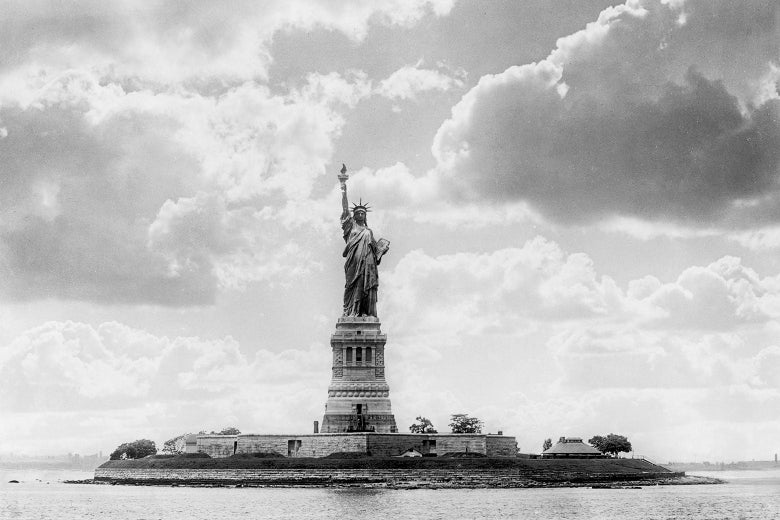
Chapter 11 features an interesting inclusion of William Jennings Bryan’s “Cross of Gold” speech. The context of this was that the speech was given at the Democratic convention of 1896, with a big issue being the struggle over the medium of exchange, the gold standard, and those who backed silver. Bryan was one of the great orators of his time. He never won the Presidency, but he was one of the most influential men of his era. He was the last to give a speech at that 1896 convention and it is best remembered for the line that “you shall not press down upon the brow of labor this crown of thorns, you shall not crucify mankind upon the cross of gold.” The convention hall erupted, Bryan was carried around to the tune of “for he is a jolly good fellow” and was voted to be his party’s nominee for the Presidency, which he would never win.
Brookhiser points to a great paragraph in that speech where Bryan says: “you have made the definition of a business man too limited in its application. The man who is employed for wages is as much a business man as his employer.” Brookhiser says Bryan “was applying the Declaration of Independence to economics. All economic men are created equal, however much they earned, whether by wages or profits,” and that “one idea that should never prevail in America is success making some men a different order of being.” Bryan was not advocating any kind of socialism, in fact his inclinations and gestures were a stopgap to socialism, despite his progressive populism. His main point was that no matter a man’s station in life, we should all remember that we should be treated equally.
Chapter 12 covers President Franklin Delano Roosevelt’s fireside chat on December 29, 1940, outlining a new wartime policy of being the “arsenal of democracy” for Great Britain and our allies. FDR emphasized to Americans, less than two months after his election to an unprecedented third Presidential term in office, that we wouldn’t be sending men into battle, but we would supply Britain with supplies, including armaments. Brookhiser says the phrase “arsenal of democracy” was honest “for an arsenal is not a bank making loans, or a convoy carrying food, but a repository of weapons of war.”
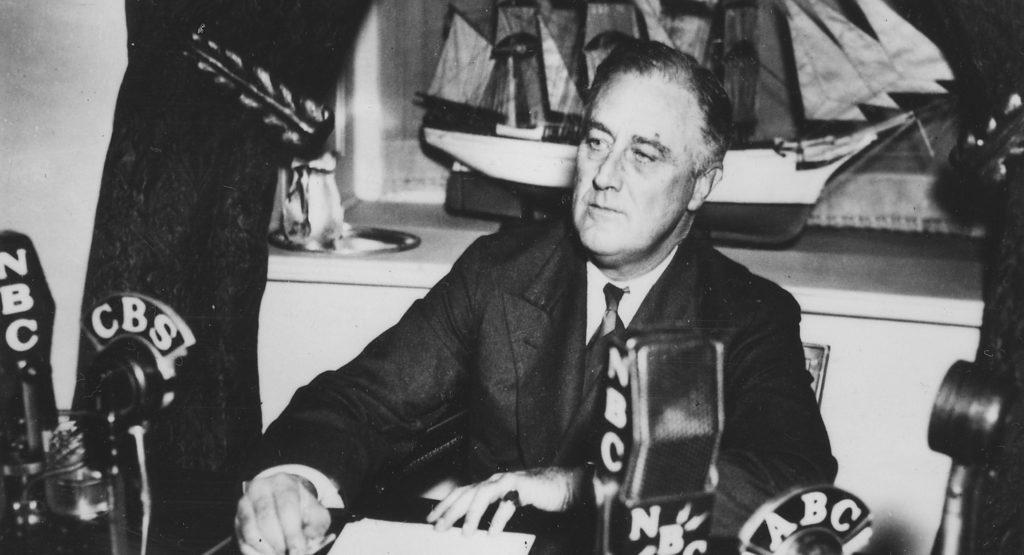
Brookhiser points to the continuity of American liberty in FDR’s words in this, his 16th fireside chat: “Never before since Jamestown and Plymouth Rock has our American civilization been in such danger as now.” FDR also mentions the Monroe Doctrine (which Brookhiser covered in Chapter 7) and emphasizes that the “interval of security [oceans provided] was over.” Brookhiser also shows FDR’s continuity of “the equality of economic man” that stems from William James Bryan (which he covered in chapter 11) when he reminds listeners that “the worker provides the human power that turns out the destroyers, and the planes, and the tanks.”
Brookhiser says that in this fireside chat, FDR “had not asked Americans to defend liberty everywhere … he called on Americans to defend the liberty of America, of its neighbors and nearby oceans – and of the European countries that were fighting to roll the dictatorships back.”
Chapter 13 is about Reagan’s “Tear Down This Wall” speech in Berlin in 1987, where he said: “As long … as this scar of a wall is permitted to stand, it is not only the German question alone that remains open, but the question of freedom for all mankind.” Reagan also added, “Yet I do not come here to lament. For I find in Berlin a message of triumph.” He then compared the freedom and economic prosperity of West Berlin with the stagnation and deterioration of East Berlin. Reagan showed the contrast between freedom and totalitarianism and gave a message of hope of what the possibility could be for the East if it was opened.
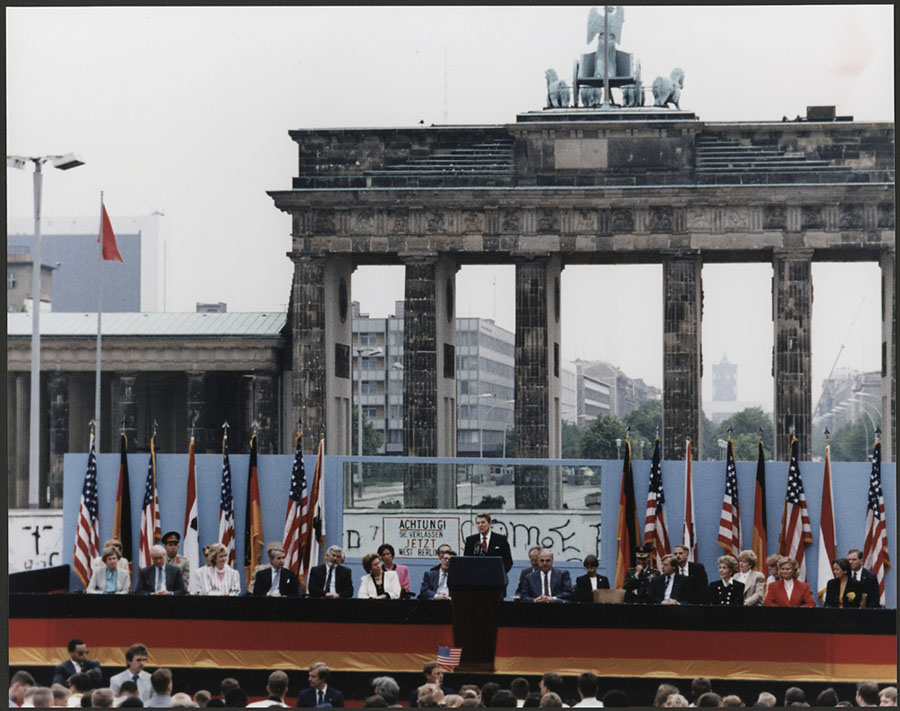
Reagan’s speech also surveyed the ongoing arms control talks. He added: “East and west do not mistrust each other because we are armed; we are armed because we mistrust each other. And our differences are not about weapons but about liberty.”
He also challenged Gorbachev to live up to his words for peace – and to act. As Brookhiser says, “Walls do not fall on their own … What men build, men must dismantle. Reagan was inviting Gorbachev to do the job.” Two years later, the Communists stood by as Germans dismantled the wall, as Hungary and Austria dismantled their border fence, as the Polish government held free elections, and as East Germans and Czechs streamed through the gaps these fences and walls had been built to prevent. Brookhiser says that Reagan’s “words at the Brandenburg Gate had told the subject peoples of Eastern Europe that their masters were hesitating and that America was on their side.”
Brookhiser has a short concluding chapter for the book briefly explaining why he picked these thirteen documents and offering some others he might have chosen. There are many documents devoted to history in “a quality of a nation devoted to liberty – it declares itself, over and over.” He adds, “More, we may hope, will come, repeatedly. We may hope – but we cannot rest in hope … There are a million seductive exits from the highway of liberty (liberty itself, ironically, allows them).”
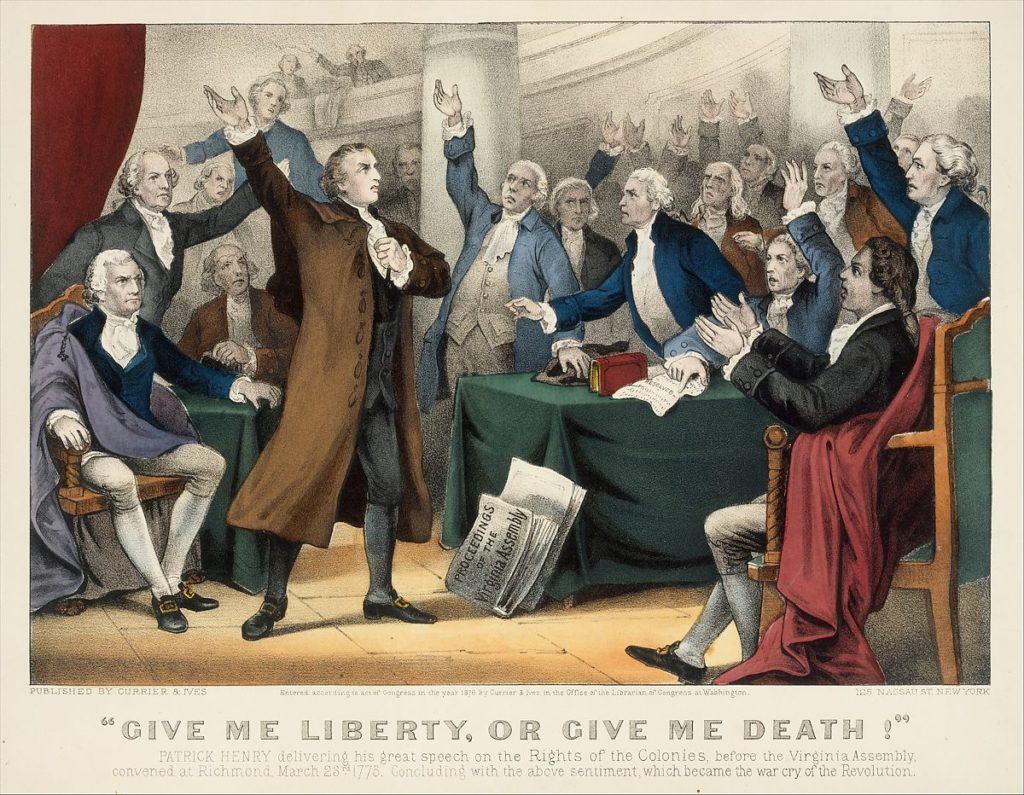
This book is something to hold dear. It is a great reminder that while nationalism may be the organizing principle of the modern world, “American nationalism embodies the principles of liberty.” We do have a shared nationalism among all stripes of Americans, and we owe it to our heritage that American nationalism is exceptional. If more Americans studied these documents, and put them in their proper context, as Richard Brookhiser does in Give Me Liberty, we will have as promising a future as every generation of Americans before us hoped that we would. “Liberty is never easy,” says Brookhiser. “You have to know what it is is, believe it is essential, and watch over and defend it.” This book helps us do just that.
